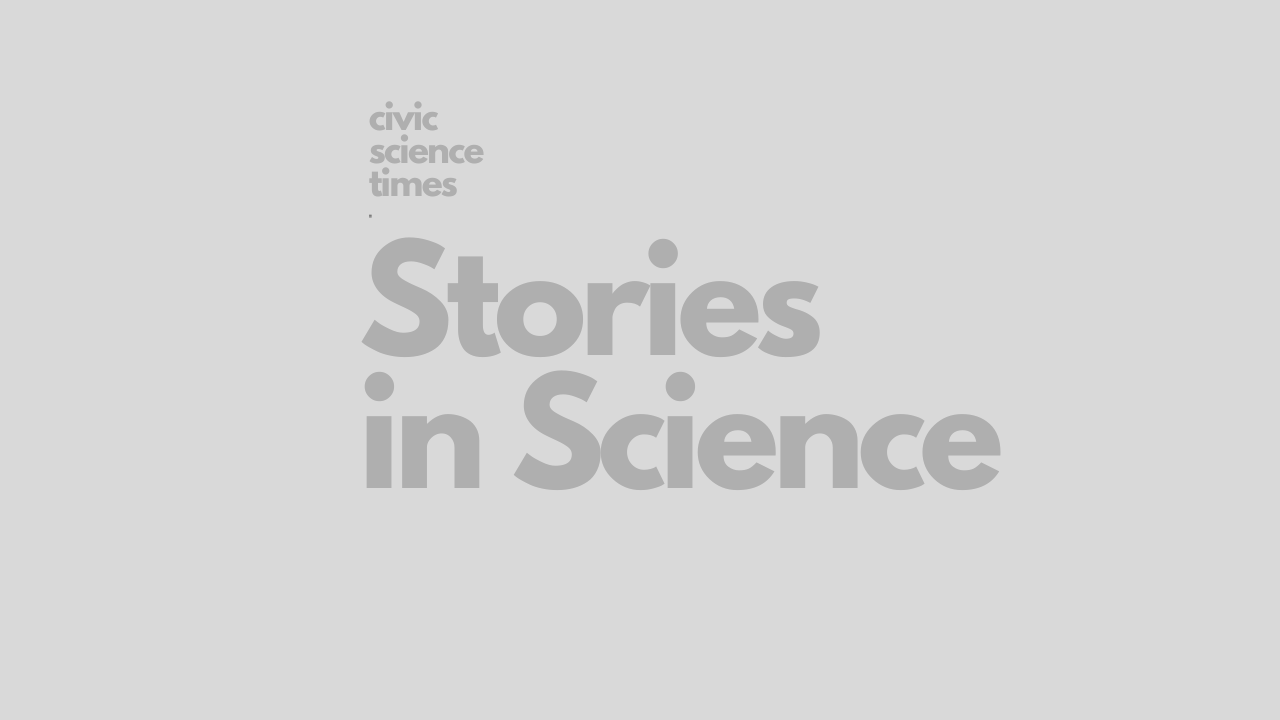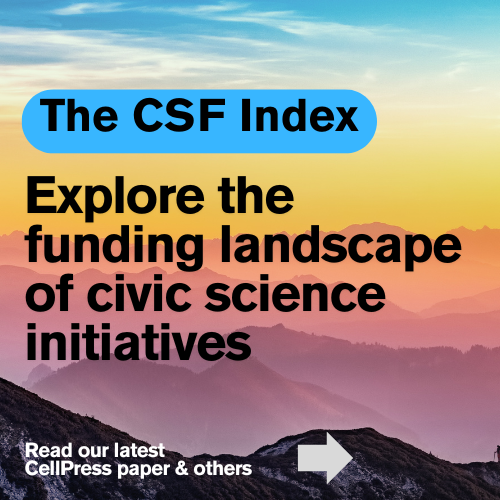CSO - Stories in Science
My Developing Journey to Becoming an Agent of Change in Science
Milanpreet Kaur: “It has been three years into my doctoral program, and recently I began to draw connections between my studies and personal growth, asking myself – Have I attempted to act as a catalyst to accelerate the rate of bringing change within our community?”

Milanpreet Kaur
Milanpreet Kaur is a PhD student in Organic Chemistry and Catalysis at the University of Calgary, Canada. Originally from India, where she did her B.Sc. and M.Sc. in Chemistry at the University of Delhi. Outside of research, she enjoys photography, blogging, and exploring different places. Her life goal is to stay purpose-driven and to leave a positive impact wherever she goes. Through the following story, she hopes to show that anyone can become an agent of change. You can find her on Twitter @Milan_Chem.
Key Points:
- Change is the only persistent thing in our life.
- Communication is the bridge between confusion and clarity.
- Curiosity and eagerness can act as a catalyst in the chemical reaction.
- Building EDI connections for lifelong learning. [/su_boxnote]
“So, are you sure that this is what you want? Graduate School”, asked my mother.
My answer was an immediate yes because, deep down, I wanted to continue to learn and grow. I knew I was ready to go back into research.

Milanpreet Kaur
I recall the day I got accepted into my graduate program. I was on cloud nine but had no idea that the journey in graduate school would extend beyond gaining skills to become a better and efficient researcher.
Hang tightly to your seat because you are about to learn how the lessons that I learned in graduate school have not only made me a better scientist but (spoiler alert) I also learned how to be a better human for myself and the community.
Change is the only persistent thing in life, and chemistry is the study of change. It has been three years into my doctoral program, and recently I began to draw connections between my studies and personal growth, asking myself – Have I attempted to act as a catalyst to accelerate the rate of bringing change within our community? Have I successfully contributed to creating a positive impact within our society?
I will let you be the judge.
Before I start working on anything, I generally go through the following points – Why, What, and How.
In this context – Why am I pursuing research in the field of organic chemistry?
What exactly am I doing?
How am I achieving my goals?
In general – Am I working towards something larger than myself? If yes, how?
To begin to answer the above questions, let me tell you about my work. I am carrying research on a project titled: Site-Selective C-H functionalization in azaheterocycles. Wait for a second – What did I end up writing? Did it go over your head? That is what my parents said when I briefly told them about my project. This was when I discovered a passion for science communication. Sure, you’re eager to bring a change within the research community, but if you cannot convey the core message to a broad audience, you need to change the way you are addressing it. After all, not every house is built with the same kind of bricks.
After that realization, I completely changed how I portrayed my research to the general audience. So, let me try again. What happens when you let water pour onto a sink strainer? You soon notice that the water passes through all the pores in the strainer, right? But what if you wanted the water to pass through only one pore? One way would be to block all but one pore by using, say, food particles. What if I tell you that you can develop a strategy that can direct the water towards a specific pore without needing to block them with food particles? My project focuses precisely on this. I aim to attain site-selectivity (passing water through a single strainer pore without clogging other pores) to direct reactions to specific sites (places) in a compound.1,2 One of the main aims of my project is to provide easy access to synthesize important complex compounds (present in various pharmaceuticals). It is a work in progress, but sometimes change takes time. Over time, I have realized that you should not beat yourself down if the pace is slow, only if you are constantly working towards it.
By now, you must be wondering what factor or instance has made me interested in the field of organic chemistry and catalysis? To answer your question, we have to take a trip back in time. During my undergraduate studies – while working on various interdisciplinary projects – I had the opportunity to delve into various sides of chemistry and it didn’t take me long to realize that organic chemistry is something that I was keen to explore in-depth. Therefore, I completed my master’s in organic chemistry and while looking at graduate programs, I was really intrigued by my current lab’s research projects. The work was inspiring. Fast forward a few years later, I am now doing research in the field of organic chemistry and catalysis. I have come to understand that graduate school is something that teaches you the craft of “how to learn.”
Now, let’s flip the (invisible) coin and look at the other side of my scientific journey where I am working towards bringing change within our community.
In 2019, the Banff Symposium for Organic Chemistry (BSOC) introduced me to the Canadians Working for Inclusivity in Chemical Sciences, Engineering and Technology (CWIC) network. The CWIC network has Equity, Diversity, and Inclusivity (EDI) groups across various Canadian Universities but not in the University of Calgary’s (UofC) Chemistry Department. 3 Through personal and professional experiences, I have realized that diversity and collaboration can contribute to innovation and creativity, both of which can help tackle global problems and benefit humanity. Keeping this in mind, I thought of connecting our department with the EDI groups across Canada. In Feb 2020, I presented to the department and in July 2020, laid the foundation for a non-profit organization entitled UCalgary CIDE (Chemists for Inclusivity, Diversity, and Equity).4 With the support of students, faculty members, and post-docs at the University of Calgary, we drafted the constitution, created an executive team and have organized various thought-provoking events focusing on our organization’s objective to promote inclusivity, diversity and equity in the chemical sciences and engineering by connecting their members (this includes students, postdoctoral researchers, staff, faculty, or otherwise), as well as by connecting with other CWIC Chapters across Canada.
“EDI Journal Club” (collaborated with the EDI committee of University of British Columbia) provided opportunities to expand networks. “Picture A Scientist – Documentary and Discussion” (in collaboration with the Graduate College at UofC) provided a diverse audience with an opportunity to have a thorough discussion about the importance of diversity and inclusivity within academia and industry.5 With ongoing monthly “STEM Together” meetings, students share their research with peers in an informal setting with enthusiastic Q&A round. The added inception of “STEM-Pals”, an ongoing four-month mentorship, connects middle school girls with a science peer so that they can get to know about various future opportunities in STEM. Our program has been added to the co-curricular record and includes 100+ registered students showcasing a readiness to make a difference within our community. Apart from this, we celebrated “Black History Month” by shedding light on black chemists and their contribution to Chemistry. In the recent “Career Guidance Panel Discussion,” professionals from academia and industry focused on bringing diverse audiences together with the goals of leading to lifelong connections and strengthening the community.
Currently, UCalgary CIDE is working towards organizing the second round of STEM-Pals, workshop on Allyship and a book club. All the above events would not have been possible without my supportive team members – a critical aspect of working as a scientist. I am grateful and honored to be surrounded by diverse researchers who are constantly ready to bring change within our community.
The other day someone asked me, “what else do you want to achieve? what are your goals?”
My reply was, “continue research, initiate collaborations, bringing diverse people together, exchanging ideas, and more.”
Take a deep breath and ask yourself – How are you acting as a catalyst to bring about positive impact within your community? How about within yourself? How can we give back to our community?
We owe a lot to ourselves and the future generations.
References:
- Kaur, M.; Van Humbeck, J. F. Org. Biomol. Chem. 2020, 18, 606-617.
- Bentley, K.W.; Dummit, K.A.; Van Humbeck, J. F. Chem. Sci. 2018, 9, 6440.
- Canadians Working for Inclusivity in Chemical Sciences, Engineering and Technology Network. https://cwicnetwork.com/.(accessed Sep 06, 2021).
- UCalgary Chemists for Inclusion, Diversity and Equity. http://www.ucalgarycide.org/ (accessed Sep 06, 2021).
- The Graduate College. https://www.ucalgary.ca/gradcollege. (accessed Sep 06, 2021).
The CS Media Lab is a Boston-anchored civic science news collective with local, national and global coverage on TV, digital print, and radio through CivicSciTV, CivicSciTimes, and CivicSciRadio. Programs include Questions of the Day, Changemakers, QuickTake, Consider This Next, Stories in Science, Sai Resident Collective and more.

-
Civic Science Observer1 month ago
What are the objectives of the Neurotech Justice Accelerator at Mass General Brigham?
-
Civic Science Observer3 weeks ago
Meet the New Hampshire organization changing the way we see insects
-
Civic Science Observer3 weeks ago
Dear Colleagues: Help us understand the national impacts of federal science funding cuts on early career researchers in academic laboratories
-
Civic Science Observer2 months ago
Some of the key takeaways from the 2024 Communicating Discovery Science Symposium in South Africa






















